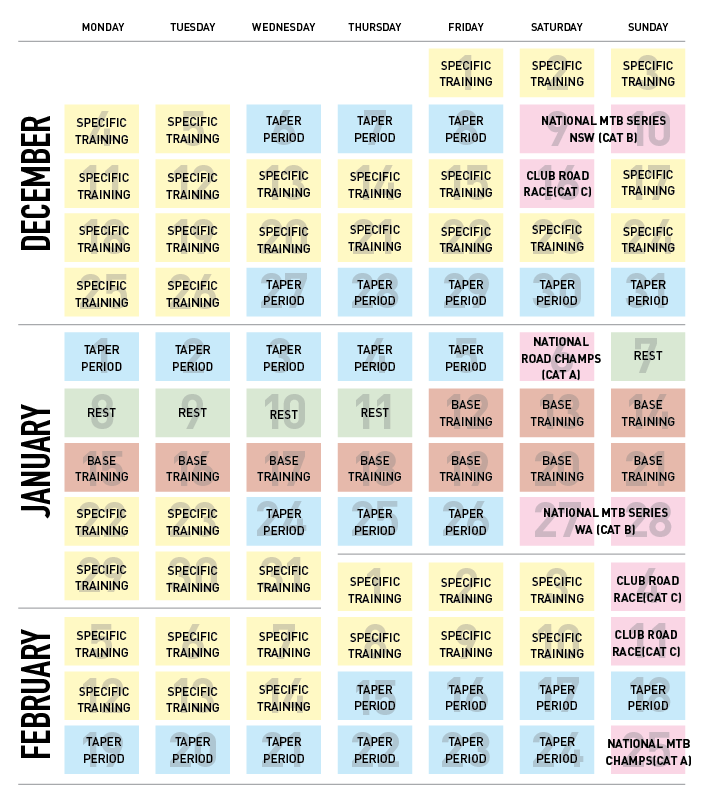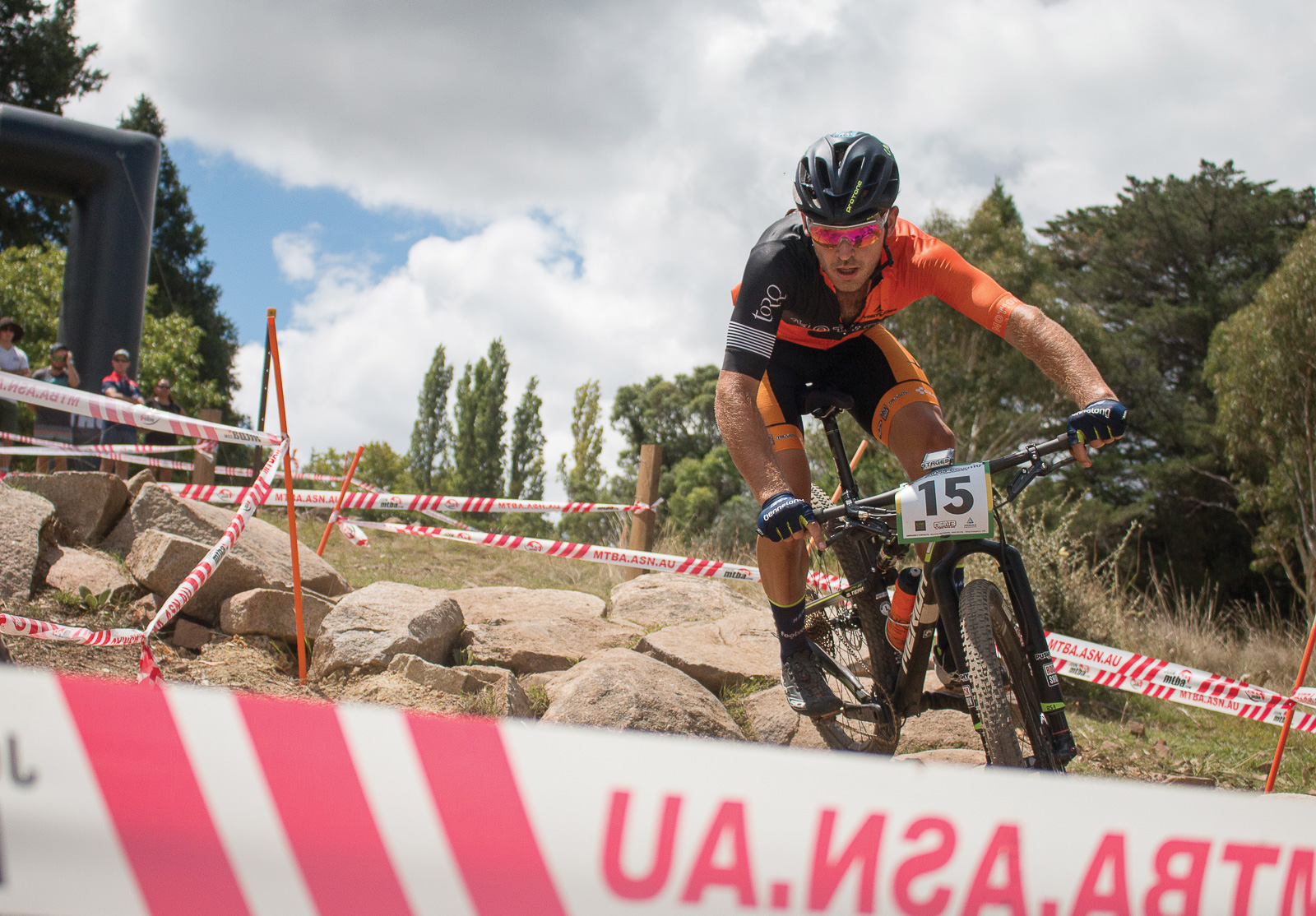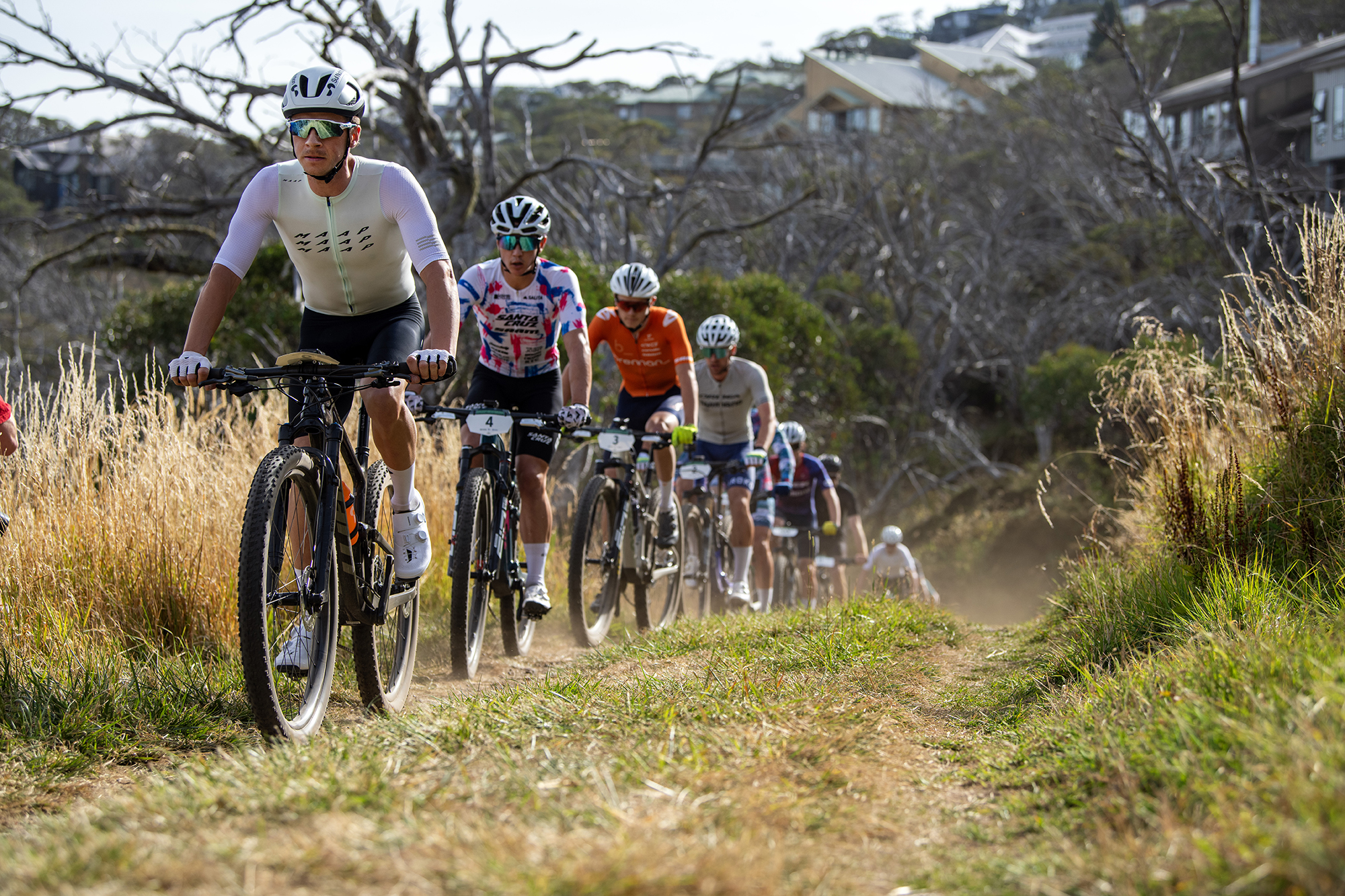Maintaining fitness over a season of racing
Maintaining your fitness over a season of racing can be hard. We originally wrote this article for the summer season, but you can easily adhere this to winter racing or general fitness with a few tweaks.
The summer race season in Australia is a long one. Many of you will have started racing back in November and are still aiming for some events through March and into April. Five months is a long period of time to hold onto peak fitness. It is common for fitness levels to drop over the course of a race season, due to tapering periods in between races as well as both physical and mental fatigue.
It definitely helps to have built a solid base before the start of your race season. However, even those who have trained consistently over winter and built a massive base, will find it near impossible to hold peak form for longer than 4-6 weeks. That is, unless they have properly planned ahead and structured in time for recovery as well as training blocks to re-boost aerobic endurance and base
In this article I will step you through a simple way to plan your race season. It might be the perfect building block for next year.
CATEGORISE YOUR RACES AND ADD TAPER PERIODS
I definitely recommend taking the time to prioritise the races you plan to do. Don’t make the mistake of simply racing one event to the next; it’s near impossible to be in form for them all.
Try categorising your races into “A, B and C priority”.
Category A Races
– Those races that mean the most to you and you want to be in your best form for
– For these races you should plan a full 7-10 day taper
*Generally only 1-3 Cat A races per Season
Category B Races
– Those races that aren’t the highest priority, but you still want to be in good form for
– For these races you should plan a shorter 3-5 day taper
Category C Races
– Those races that you aren’t concerned about the result of and are using for training purposes
– No taper required
*Why no more than 2-3 Category “A” races per season? Tapering for such high priority races means lots of recovery in order to freshen the body up. If you were to taper for such races every 2nd week, you simply wouldn’t get enough training done and fitness would diminish.
Once you have made a list of races and prioritized their importance, mark them into a calendar and add in appropriate taper periods for each race.
ADD IN SPECIFIC TRAINING AND BASE TRAINING
SPECIFIC TRAINING
In previous articles I have spoken about the importance of training specifically for your event the closer you get to it. Make sure to allow for at least 2-3 weeks of specific training prior to each Category “A” race.
BASE TRAINING
Base / Aerobic Endurance training is quite often over-looked during race season. For sure, base training has higher importance during the off-season, but it also is important to include during a long race season. Spending time in your aerobic endurance zone will increase capillary growth within muscles, making it easier to get oxygen and fuel to these muscles. Also it is important to continue to train your body to use fat for fuel instead of its glycogen stores, particularly if your goal races last longer than 2hrs.
Aim to include at least one period of base training during your race season – this often works best in the middle of the season.
ADD IN PERIODS OF RECOVERY
Recovery is probably the most important component of your race season and is often not valued highly enough. Athletes quite often make the mistake of thinking they need to train harder if they have performed poorly in a race, when what they really need is more recovery time. It’s important to note that recovery is required for both physical and mental fatigue.
Most of us are familiar with feelings of muscle aches and pains following strenuous training and racing and recognise the need to rest our muscles. Mental fatigue however, can be more difficult to recognise. Dealing with the highs and lows of good and not so good performance, nerves and performance anxiety prior to big events and the constant pressure to get the most out of yourself all contribute to mental fatigue. It is just as important to include periods of rest for the mind as it is for the physically working muscles.
Some of the more common signs of fatigue include; lack of motivation, poor concentration, increased resting heart rate, decreased heart rate variability, constant muscle soreness, feelings of depression and anxiety, impaired judgement, irritability and moodiness.
Hopefully by factoring into your program periods of rest, you will avoid any long-term fatigue. Ideally try to plan your recovery periods for straight after an “A” priority race. The length of recovery time should be just enough to allow for mental and physical re-charge without a drop in too much fitness.

EXAMPLE RACE SEASON
This calendar shows an athlete’s 3-month race Season. It is a great example of careful planning of sessions in between her two Category ‘A’ races (highlighted in red). These goal races are the Road National Championship (6th Jan), and the MTB National Championship (25th Feb). The timing of these races works very well as it allows ample time for a 5-day rest period straight after Road Nationals followed by 10 days of base training, followed by 3 weeks of specific training and finally a 1 week taper prior to MTB Nationals. She also has planned four category ‘B’ races (highlighted in blue) with a 3-day taper leading into, and 2 two category ‘C’ races (highlighted in Purple) without a planned taper.
Photos: Mike Blewitt







